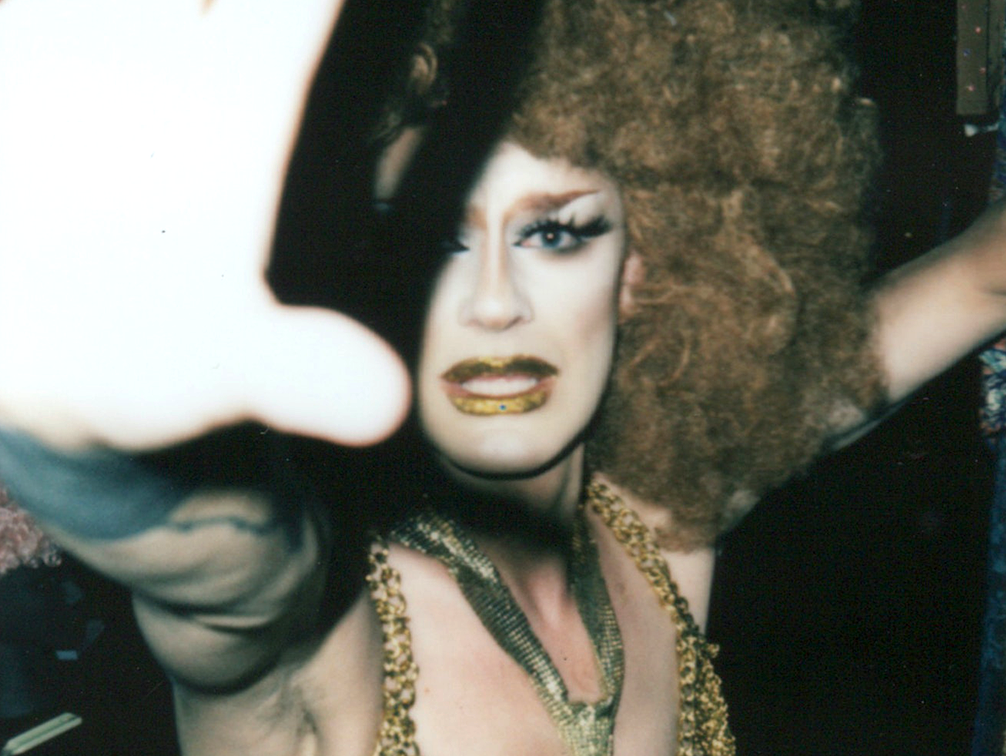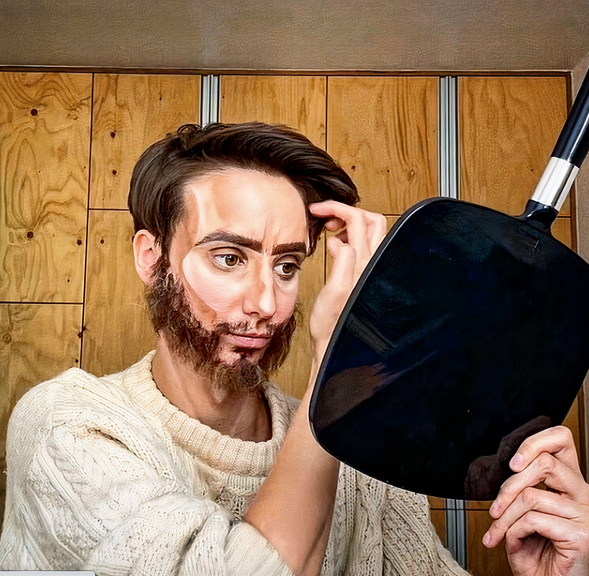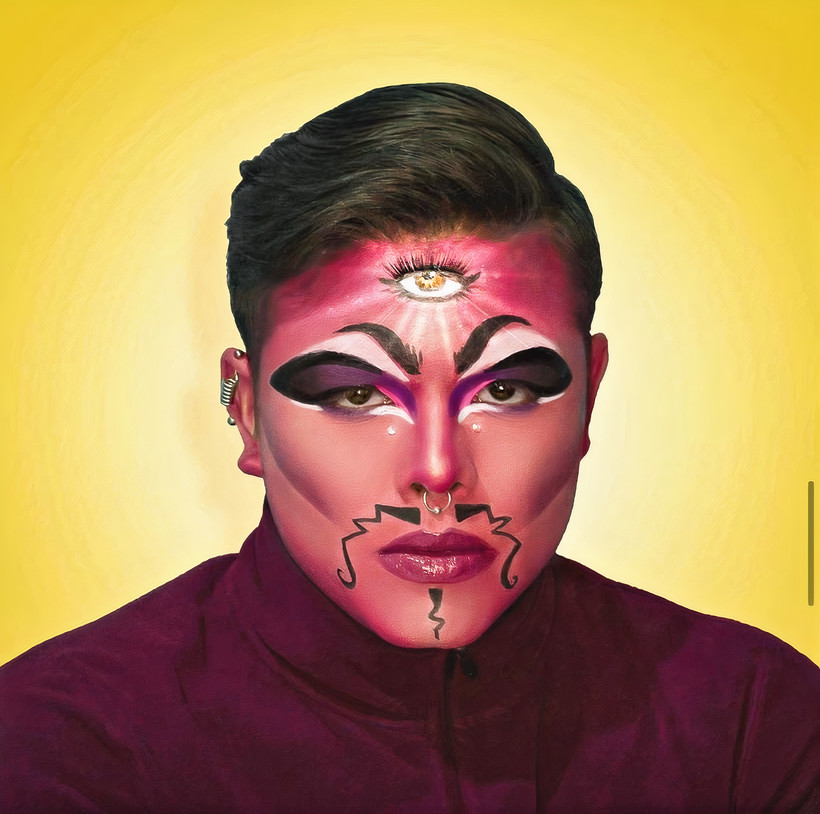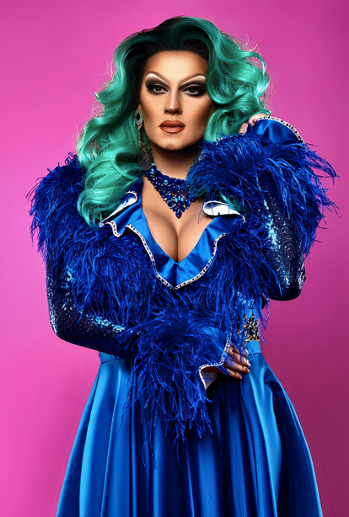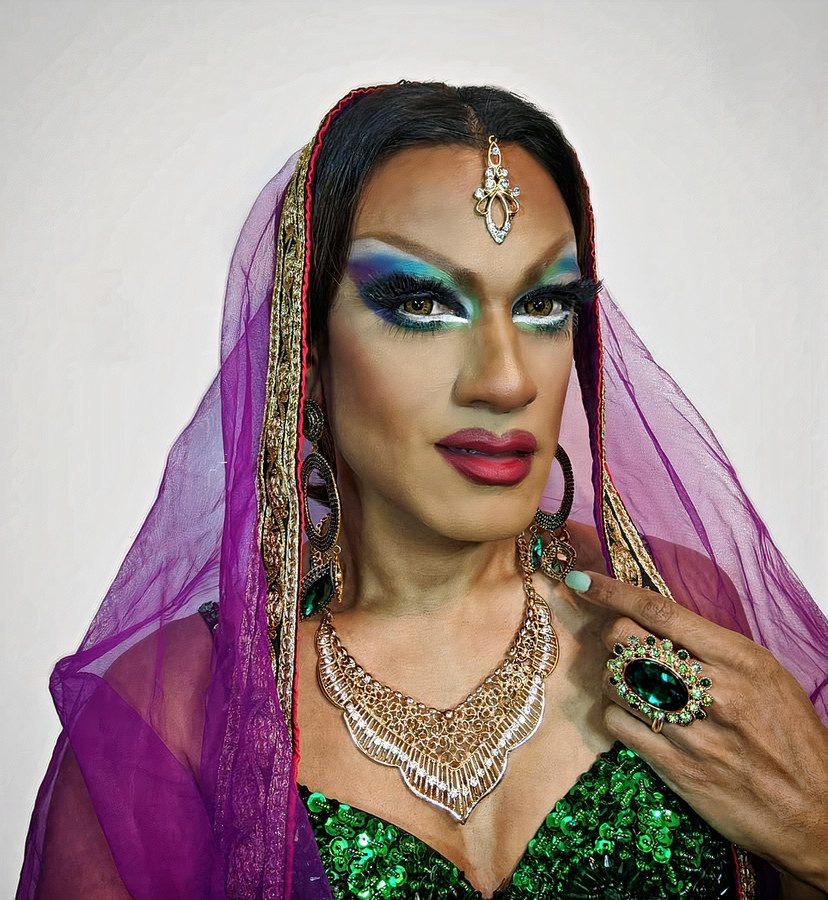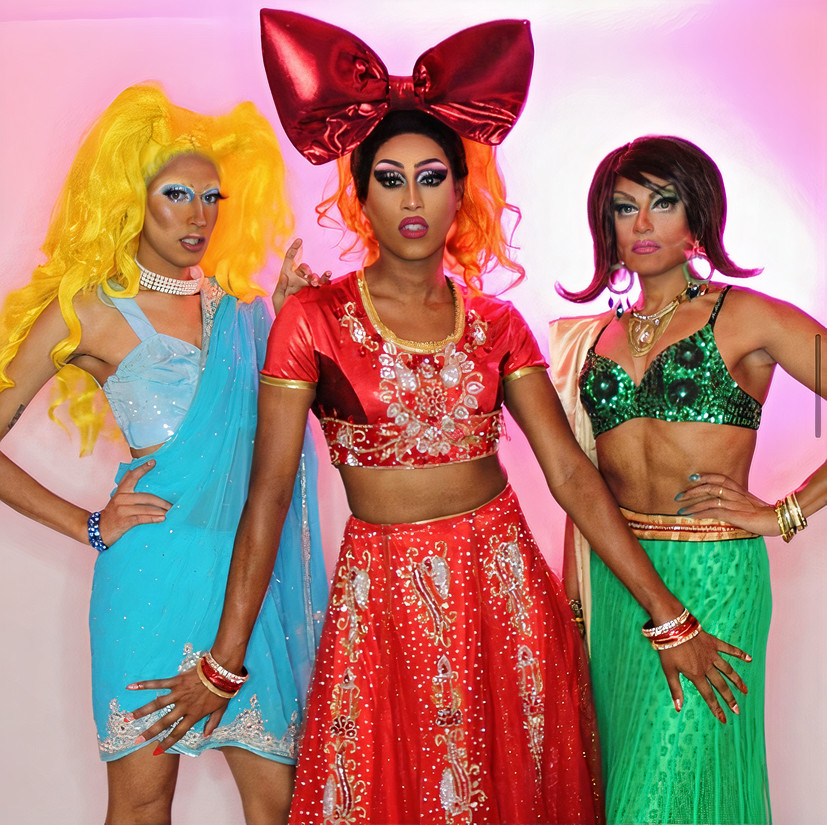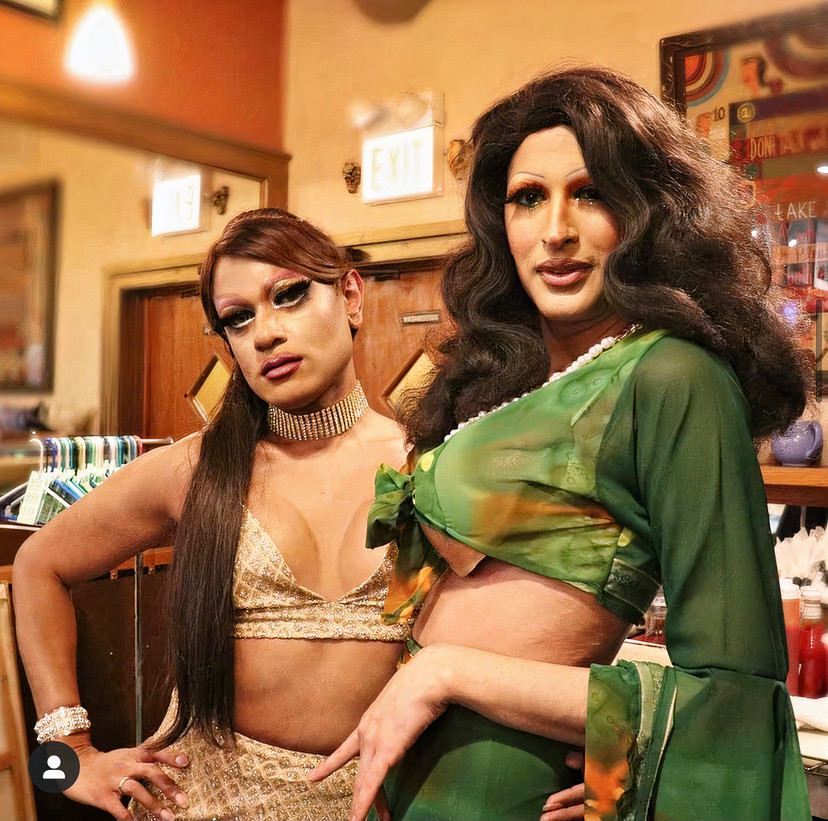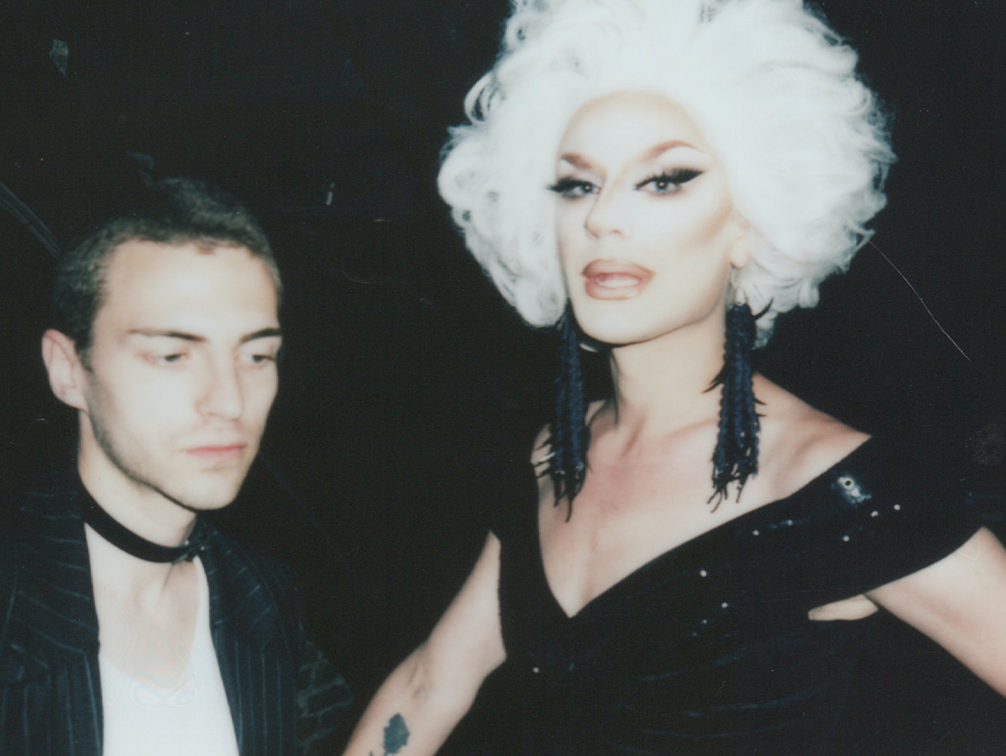
“My father gave me the greatest gift anyone could give another person; he believed in me.”
Dads, don’t we love them. Nothing compares to the bright mood and guidance they can bring into our life. They’re like unsung heroes. In the drag industry, the amount of support we need to flourish can’t be underestimated. You’re thinking drag, dad and support; how? Yes, we know. Sometimes getting your dad to warm up to the idea is easier said than done. For one, we’re sure they don’t imagine spending Sunday mornings tidying makeup and dresses from the floor after what the adventure Saturday night in Soho brought. Thankfully, for Alexander or Kiara Hole, this isn’t an issue, as he carries his dads’ Favolous Flavas’ legacy of the drag queen hype that’s dominated their household since the 90s. Given their popularity in their hometown of Edinburgh, both father and son duo have been dubbed ‘Scotland’s answer to Kim K and Kris Jenner’ by locals.
Favolous Flava has been performing drag since the 80s. Her favourite costume draws inspiration from the Scottish national colours and the St. Georges’ flag. “Back in my heyday, so through the late 80s and majority of the 90s, drag was always kept quiet in the basements
of nightclubs and bars,” she says. “The main impetus when it comes to being on stage was on vocals and exaggerated performance. That’s still the key to many contemporary drag scripts, which gives me a proud feeling.” In the early days of her drag, Favolous Flavas’ desires were monumental in bringing a high work ethic into every performance. She treated each performance as if it were her last. She highlights how competitive this field was in the 80s, underlining that it often didn’t permit any slacking. Competition for limited places was intense. “When I started, I lacked self-belief and courage. There was no formula to success. Drag had no end goal, nor commercially or
financially. For us gay citizens in Edinburgh, it was a safe haven where we could be ourselves. That’s why this passion still stays the same. It’s something we created. I also believe it was much more of a community; Instead of being in direct competition, we almost had to become pioneers for the next generation. I call it community competition rather than individual. The individual competition is more prevalent in the drag field of today.
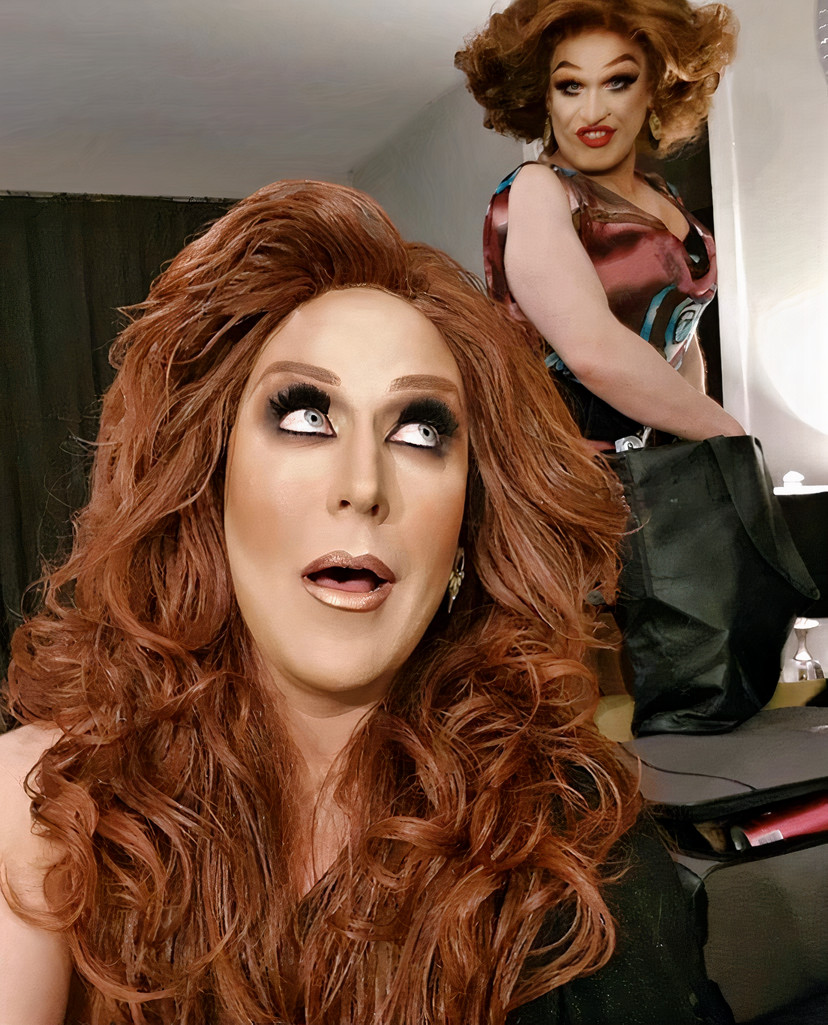
Kiara Hole agrees with her dad in that the 80s and 90s were much more of a competitive field, but that the generation had more of a family feel than it does today. “I remember, while growing up, I’d see him walk in at 1 a.m. with eyelashes dangling off. I thought to myself, I’ll have some of that,” she recounts. “I’m from outside London, where the drag scene isn’t in the public eye much. We almost have to force and market ourselves to be seen. I remember, back when I was 13 years old, every time after I finished school, my dad and I would have our catwalk competition in the hallway to see who the ultimate queen was,” Kiara details. “While every other kid my age played out in the streets with their friends, my dad and I would slap on contour and our mums’ worn-out dresses. And I loved every second of it,” she states. However, Kiara notes that “back then it was also so much more fun because you didn’t give a toss. Now generations have changed, and social media presence has made the drag industry become a ‘who looks and feels the best’ competition.”
To father and son, it appears to be the 80s generation who got the ball rolling to make drag into the phenomenon it’s become today. However, with every performance in those years came potential harm. Favolous Flava reminisces about her initial foray to CC Blooms, an iconic bar for drag queens situated in the heart of Edinburghs’ city centre. “The first time I stepped foot into this building, I just felt that sensation of home. I knew this place was special. No one judged me, which I found mystifying, as just twenty seconds out the door, I’d just gotten verbally harassed. As soon as I entered the two doors, it’s like the club acted as a shelter,” she recounts with glistening eyes. “The drag queens that were performing on that comedy night welcomed me with open arms. That’s what drag is about, welcoming and providing lost souls with a home and a place to be free. I would’ve loved to bring my son to experience that, but I just wanted to protect his safety. Imagine if something happened to him, it would’ve put him off drag forever.”
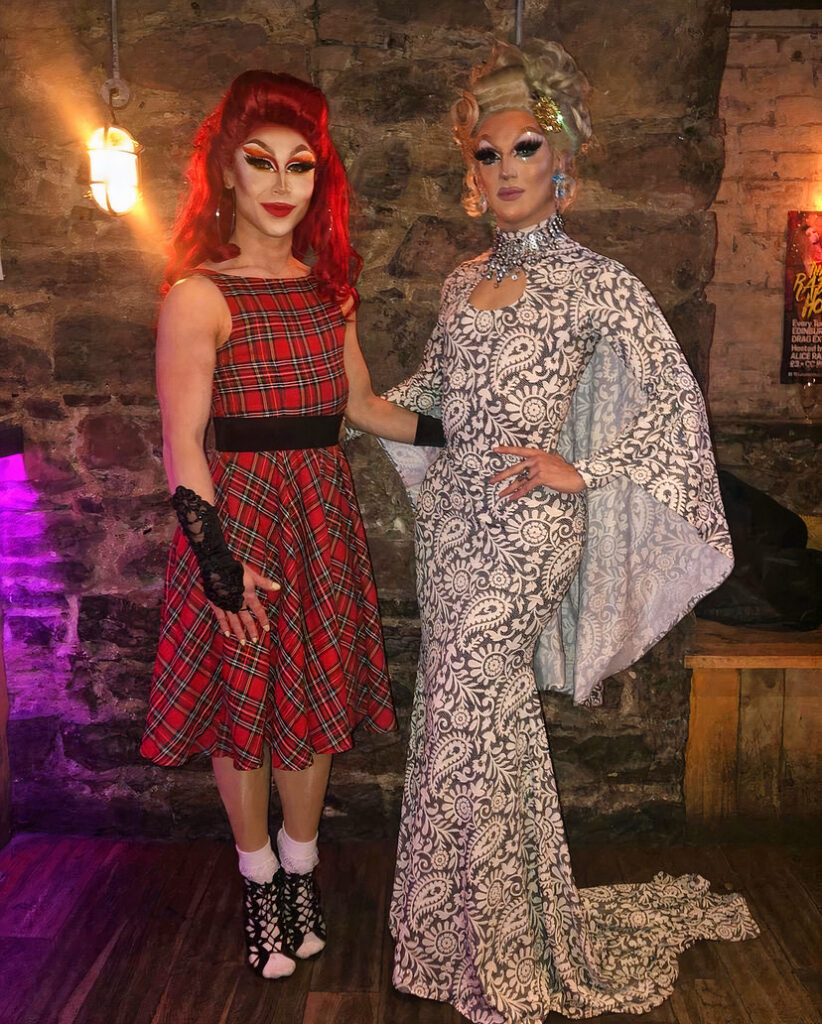
Kiara concurs, “it would’ve dampened my vision and probably left me mentally scarred. I’m such a passionate advocate for drag, so if I’d seen something like that, it would’ve hurt.” In mid-thought about the transitions of generations, Kiaras’ mood shifts immediately. “I’m so much more grateful for having been raised in the right era as I know the restrictive realities my father had to endure. Being unable to extensively explore the term drag didn’t help the drag generation in my dads’ time to move in the right direction for a long time,” she explains. “My dad’s club CC Blooms, which he brought early this century, has images of drag performers from the 2nd world war era. However, when you look at images from the 1990s and mid-2000s, the clothing and makeup styles have stayed the same. That’s a half a century year gap where no improvements were made. I’m just thankful for living in a social media era in which I can capitalise from my talents of being a drag queen.”
Fast forward to today, where we have this open-minded generation, the drag industry has become extensively commercialised. It’s much more than merely impersonating a woman. Go on GiGis’ Instagram; every tagged queen has a descriptive version of themselves in the bio. Ask any of them, and you’ll find there’s no such thing as a direct drag queen. There’s always something either in between the two words or before it.

Business ventures within drag are something that’s on the rise. Take a glimpse at the strip in Soho; you are spoiled with choice! The investment in drag and LGBTQIA+ clubs in Edinburghs’ city centre has seen itself to be branded as a ‘mini Soho’ by the Scottish drag community. Pay Favolous Flavas’ club or CC Blooms a visit on a Wednesday night and find the Scots mixing Irn bru with gin and tonic water. Starting a political agenda will attract death stares. However, adorning yourself with a sassy wig and an exquisite dress without forgetting to add a pinch of comedy will attract a flourishing crowd.
This is a standard method drag performer Favolous Flava follows to bring out her ability. “From the beginning, drag has always had elements of political know-how,” she says. “This club itself has used this method to attract fans on a weekday. The entertainment factor will always be in the mix, but politics is what sells now. A lot of my new material pre-covid and post lockdown is politics-related. It takes the piss out of the English, Brexit and all that malarkey,” she explains. “We Scots love it because it gets under the Englishs’ skin. We’re like their annoying sibling. We love em’, really! But by taking it with a grain of salt, it’s much easier to see it from the entertainment point of view than the political one.

This technique of implementing political thought into drag has seen the growth go all the way from performance to impersonation. This has given the artistry a whole new avenue to reach financial rewards. Kiara now uses it to her advantage in her attempt to achieve mainstream success. “I like the impersonation side more than the performative,” she says. “Taking the mick out of another individual – I love it! I used politics to try to get the upper hand on competitors as I know us Scots prefer not taking ourselves too seriously.”
Social media is another advantage Kiara has over Flava. Go on TikTok and type in ‘drag queen’, and you’ll get 3.7 million results. Quite impressive if you ask us! Kiara appreciates the power social media has granted the drag field. However, drag and politics have merged on social media platforms, making it all the more monumental. “Apps such as TikTok have undoubtedly taken the mainstream and commercial side to another level. One I never imagined possible all them years back,” Kiara declares. “Everyone mentions TV shows such as RuPaul, but I feel like social apps have had a better influence. The most popular drag queens on the app are people in their 30s and 40s who’ve taken this trend by storm. It’s not just doing viral dances or funny skits. It’s more. Now, we see more politically aware content. It reveals that drag can also be serious and a valuable tool in fighting larger political issues, such as LGBTQIA+ rights. This generation has given sexuality and gender the middle finger, and, in my eyes, that’s the biggest thing drag has done for this generation,” she says. “When I look into the crowd and see wee people holding hands, being in love and just embracing their gayness, IN PUBLIC I emphasise, I just know it never happened back in my dads’ day. I can’t even remember a time where I was subjected to a lack of acceptance. It’s really that good. My heart is filled with content knowing how people can feel much more comfortable being themselves,” Kiara says with recognisance.
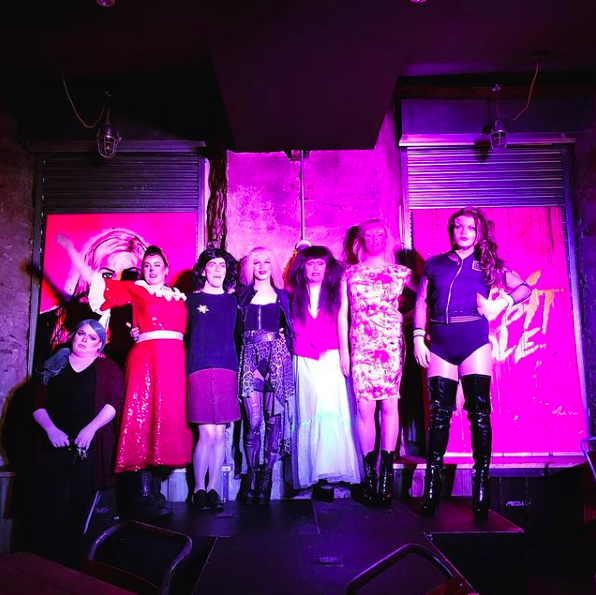
As this artistry has found stability on this eras’ mainstream TV, the next step is financial reward, according to this dynamic duo. The upcoming generation deserves to make this their livelihood. Favolous Flava looks forward to the first time she’ll hit the stage with her son and fellow queen Kiara Hole later this December. Selling out clubs in Soho and Shoreditch with his witty aura, her ‘little cherub’ has had quite the impact on the drag game across all four British borders. “I still get goosebumps talking about it,” she says. “I think our family home will have the same image from the night framed in every room of the house. Being on stage with someone who shares the same blood as me in a prestigious drag club in the heart of Soho will be such an emotional moment for me. Ahh, I wish I could fast forward time to the claps, the acceptance and the laughter. It’ll be the perfect performance,” Flavolous envisions. “Honestly, a father and son drag duo is like finding a needle in a haystack. If it can inspire the child and parent bond as well, it’d give me such satisfaction.”
Kiara expresses equal excitement. “My dad is so soppy, I agree. I can’t wait! When lockdowns are over, we’ll shut down the stage for sure,” she says confidently. “Make sure you tell the English to pay attention to the guidelines. I’m missing out on money, and we’ve got a whole generation to inspire here.”
Oh, we will. Trust us on that. Keep your eyes peeled on GiGis’ Instagram; we’ll be promoting the show closer to the time.
Before we conclude, Kiara leaves us with a beautiful quote. “My father gave me the greatest gift anyone could give another person; he believed in me.”
If you have any heart-warming stories of bonds connected to your drag journey, make sure to e-mail or DM us on Instagram.
